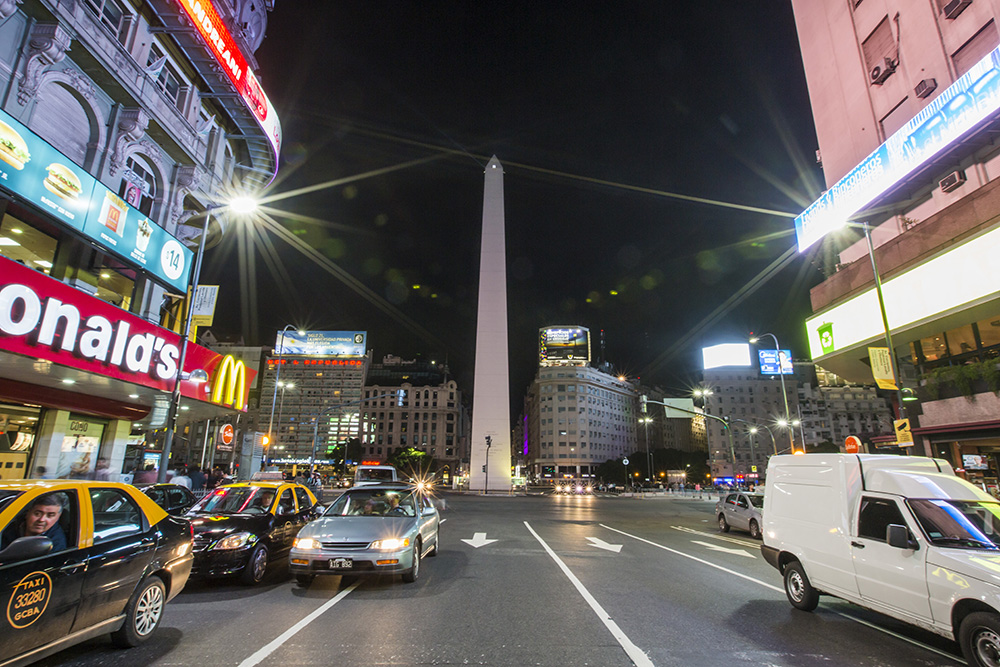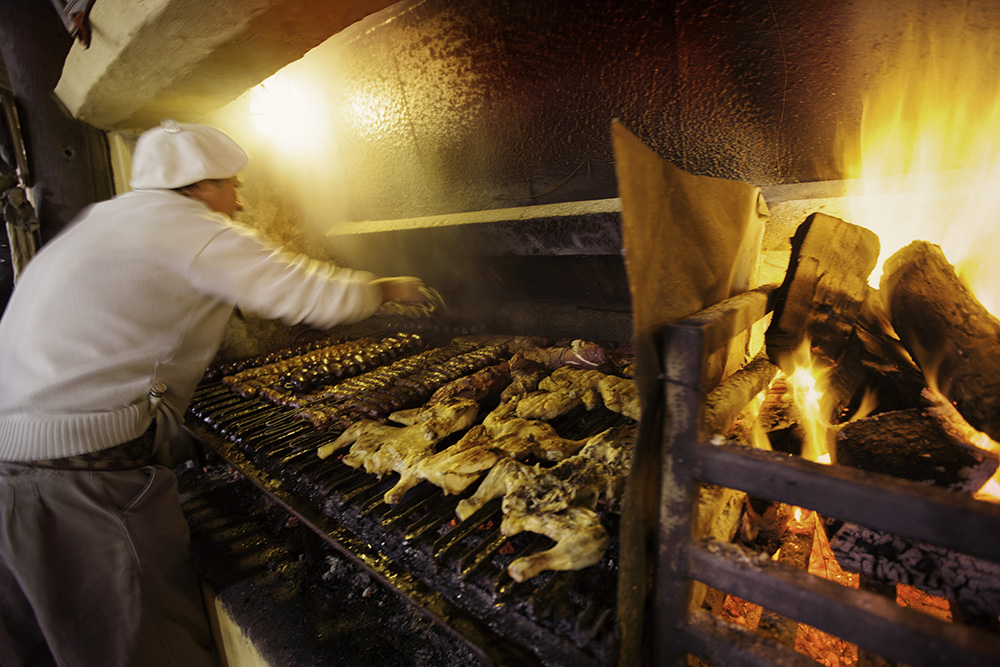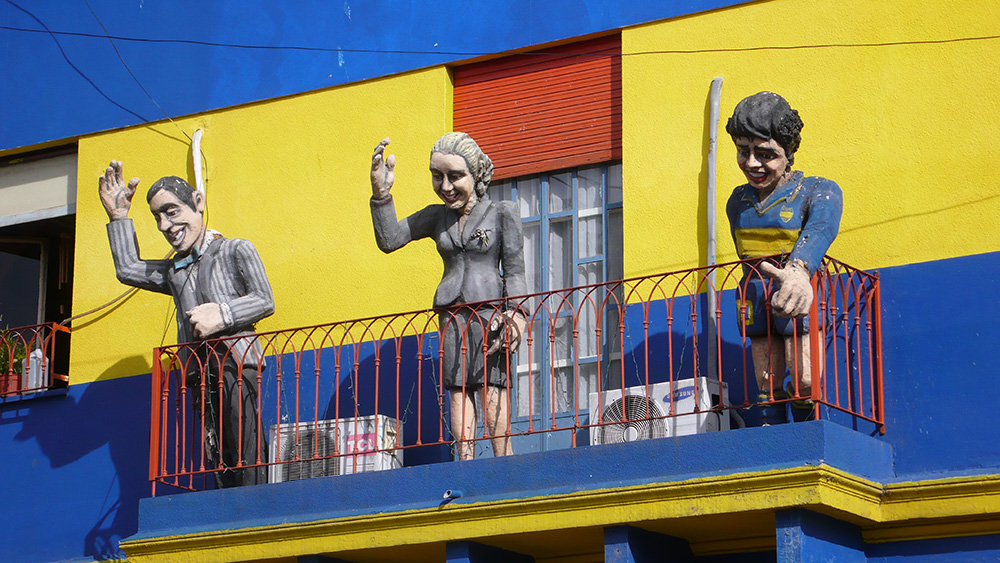Cities tend to have difficult relationships with the night. Due to longstanding but increasingly outdated ideas about how work works — i.e., that one works during the day and sleeps at night — cities have tended to shut themselves down after dark so as not to tempt workers out of their productive schedules. But when certain cities get very big, the sheer number of people who don’t cleave to the norm give rise to late-night exceptions: diners, bars, clubs, and sometimes shops.
But there are other cities that only truly become themselves after dark. Tel Aviv is one, with the young, the middle aged and the old striding down Dizengoff Street, filling up cafés and bars, restaurants and stores that are often empty during what much of the world refers to as business hours. Berlin is another. But even in this tiny sisterhood of night cities, Buenos Aires, in Argentina, stands alone as a true antipode of what northern hemisphereans think of as city life.
I was in town for five days after a three-week sea adventure that taught me about the Beaufort scale in terms I’m unlikely to forget. I’d heard it was a late-night kind of the place, but I was not prepared.
One night will have to stand in for a week of similar revelations.

Buenos Aires by night.
It was my last night, and I’d figured out, by then, that people ate later there. There’s a North American notion that people who eat at 5 or 6 p.m. are salt of the earth, 7 or 8 p.m. makes them sophisticated, and 9 or 10 p.m. makes them enviably Proustian. But try to get supper at a restaurant in Buenos Aires at 10 p.m., and you’ll be eating alone.
I’d put off getting a steak until the end of my trip, because of course I’d heard about Argentinian steaks. The spots friends recommended to me all seemed to think it was reasonable to charge $90 to $100 for less than a pound of cow, so I decided to choose a cheaper restaurant at random. I found one in the Hollywood district of the Palermo neighbourhood. I got there at 11, was seated by midnight, and ate my steak amid a packed house. I hate to be banal, but it was as remarkable as everyone said it would be; the fat, which I usually trim, was a feature of the flavour. It was to be my only steak, so I ate it slowly, taking tiny bites as I sipped a big, bloody glass of Malbec, and then another. It was 2 a.m. by the time I left, and I wasn’t close to being a holdout.

Late dinner — and we mean LATE late — is the norm in Buenos Aires.
Being a late-night-ish person myself, I’m often up for something else post-dinner, post-bar, post-club. In the cities in which I have lived, this mostly means after-hours places, which may or may not be open, or still in business, or full. I wasn’t really up for a club, and felt more like an after-dinner drink, but worried — despite the city’s reputation — that I might have trouble finding one.
I needn’t have.
I turned right on the first street I found after the restaurant, and stopped at the first thing that looked like a bar or café. I opened the door at it was packed, as I should have expected it to be.
But it wasn’t just packed with people. It was packed with stuff. Drawings and paintings, shrines and cathode-ray screens pointed downwards, all fully given over to Juan and Eva Perón; the place, as it turned out, was called Perón Perón.

Statues of Juan Perón, far left, and Eva Perón, centre, in downtown Buenos Aires. That's Diego Maradona on the right. Photo courtesy of John S.
I was led to a single seat on a riser, a sort of banquette for one that gave me a front-row seat to watch everything that was going on in the small, friendly, chaotic room.
The screens were excerpts of speeches on a loop, mostly Eva’s. Evita may seem like a dramatic overstatement when it plays in theatres and cinemas elsewhere, a sort of political Sunset Boulevard, but it’s possible that the average Argentinian sees it as a calm statement of facts, with maybe a little of the heroic poetry that infuses life there, political and otherwise, and overfeeds the spirits that become Evita and Borges, Barenboim, and Maradona.
But it was the big table right in front of me, with 10 or 12 men and women at it, all talking at once, stopping only to drink, that caught my attention and kept it. I don’t speak Spanish, but I understand it the way anyone raised in Canada or the U.S. does, able to piece it together from the little bits of espera and andale, no es bueno and cabron that leak in through everything from Cheech and Chong to Family Guy. So, I don’t know what they were saying exactly, but I do know they were talking about politics and labour, workers, rights, and revolution. Christina Fernandez de Kirschner came up a lot, the Perónista wife of the Perónista president Nestor Kirchner who, following the same telenovela script all South American politics seem to, took over from him when he died suddenly in office, and ruled herself for another eight tumultuous years.
I opened the menu, and ordered the first cocktail I saw, which was described as “fuerte, como el pueblo” (strong, like the people). Perhaps eschewing the bourgeois daintiness of regular cocktail glassware, it was served in a pint glass.
Though I’m guessing non-Perónistas don’t spend a lot of time in this café, it seemed like the city in little, the decor and very concept would play like a joke in many other parts of the world, but the over-the-top theme-park approach seemed just right here, an embodiment in alcohol and ambient lighting of the high drama that both entertains and sustains people in this part of world (and, of course, oppresses, imprisons, and disappears them as well).
It took me a long time to finish that pint-sized cocktail, and even longer to finish the next one. It was a little past 4 a.m. when I got up. The place was still packed, the communal table still vocal. In fact, as far as I could tell, every table was still occupied by the people who were sitting there when I arrived.
I stepped out onto the street, and into a stream of several crowds of people — young, less young, and decidedly not young — all heading in the same direction. I followed along, and across some train tracks. A club district. They hived off into their respective clubs, and I, with a heavy heart and an early flight, grumped my way back to my hotel, making a promise to myself that when I returned, it’d be on a one-way ticket.
Getting there
Keen to grab a pint at Péron Péron? G Adventures can get you there. Check out our small group tours to Argentina here.























